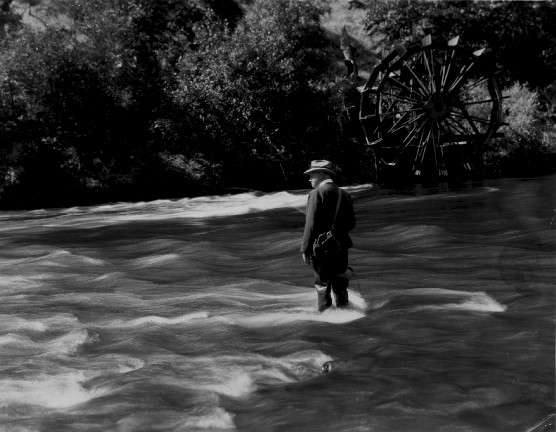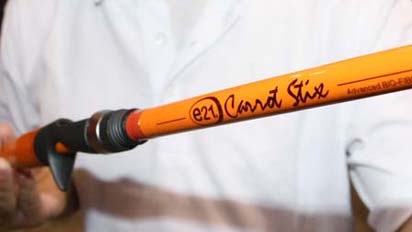Walter Brunner was born on 2 April 1927 in the Tyrolean municipality of Pyburg in Austria. His father was a carpenter, which certainly helps explain his life-long love of wood and woodworking. He grew up fishing, but international politics intervened dramatically in the life of Brunner and all other Austrians when Hitler incorporated Austria into the Third Reich in 1938. Following an injury sustained at the end of World War II, Brunner returned to Tyrol to try and piece his life together again. Austria—reformed as an independent national state again in the wake of the war—was like all European states, crippled by the ravages of war. Brunner discovered that no fishing rods were available in Austria, so in 1946 he began to construct his own, mainly for bait fishing. Then one day, as Austrian fishing writer Michael Schremser noted in a moving appreciation of Brunner published on The Austrian Fisheries Society On-Line, in 1949 “he saw a distinguished gentleman who fished without floats and without worm, and at the end of his strange fishing line was a black fly, but he caught one fish after the other. This woke Walter’s curiosity…” After a long discussion with the man, Walter was hooked.
Having engaged in woodworking in Steyr, Austria, he naturally soon turned to constructing split bamboo fishing rods. His initial efforts were unsuccessful, but he soon learned from his mistakes and eventually “he built all the furnaces, milling, winding machines and tools and afterwards even manufactured his own rod cases, since Hardy did not supply him in time.” By 1958, he developed his famous Brunner Mill, the outline of which can be Seen Here.
By 1961, he had perfected the art of fly rod making to the point that he made it his occupation. In 1963 he founded the Brunner Fly Rod Co. of Austria that was so successful he was for many years the only rodmaker in all of Europe to make rods on par with the American masters. He did not take on partners, believing that “quality work can come only from him and only by his own experience, improvements, and developments.” He eventually sold his rods through Adalbert Grassmueck of Vienna, a major tackle merchant founded in 1880, who inaugurated a famous “Austria” line of Brunner fly rods.
He continued to make custom rods well into the 1990s, and never lost his passion for fishing. His motto was “fishing rods are not about catching fish, it is the fishing that matters.” Walter himself declared: “In the course of the last 50 years, I have learned to know many kinds of fish and I believe each one in its own way has a special appeal… Even if I sometimes come home without fish, every day fishing on beautiful water is nevertheless an experience and I am glad that I may experience it."
In 1988, Dr. Michael Hofmaier, writing in the 100th Anniversary publication of The Austrian Fisheries Society in 1988, declared that “Walter Brunner has all the characteristics that distinguish the great master otherwise found only in fairy tales...”
Brunner had a number of fans here in America, including the unidentified author at Hipwader.com that penned the following passage:
Another one of my all-time favorite makers is Walter Brunner of Austria. Walter is now in his 80s and has been building rods for most of his life and has built some of the finest rods you will ever lay your eyes on, and he too uses machines. Everything from his rotating ring of fire for tempering the cane, to his custom built beveling machines.
An on-line ad for a Brunner rod reveals the esteem with which he was held: Walter Brunner, Traun Special, 7,7', #5-6, 2 pieces/2tip. Superfine all cork grip with dark blued cap and ring. Black wraps. Superb varnish and hardware. Built by one of the best known craftmen in Europe. From his workshop in Steyr, Austria near river Traun he has built outstanding bamboo rods for more than 30 years. The highest priced rods from a living legend and this rod is from the famous "Wildwasser" family of rods. An extraordinary casting machine especially in windy weather. Unfortunately master craftman Walter Brunner has stopped building rods because of his age.
Brunner pioneered the modern split bamboo fly rod in Europe, and his absence will be felt in every corner of the fly rod world.
-- Dr. Todd
For those interested in reading Schremer's article in German, Click Here.







